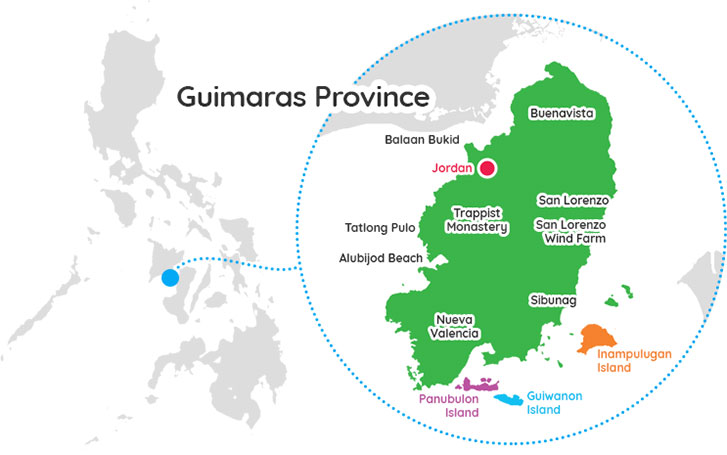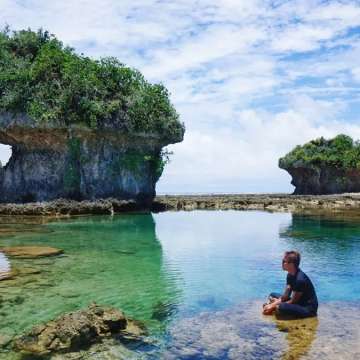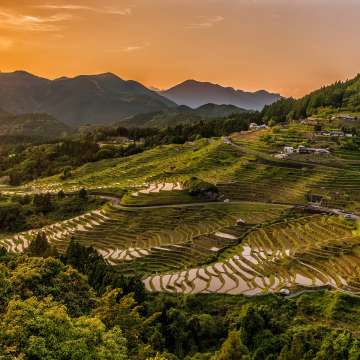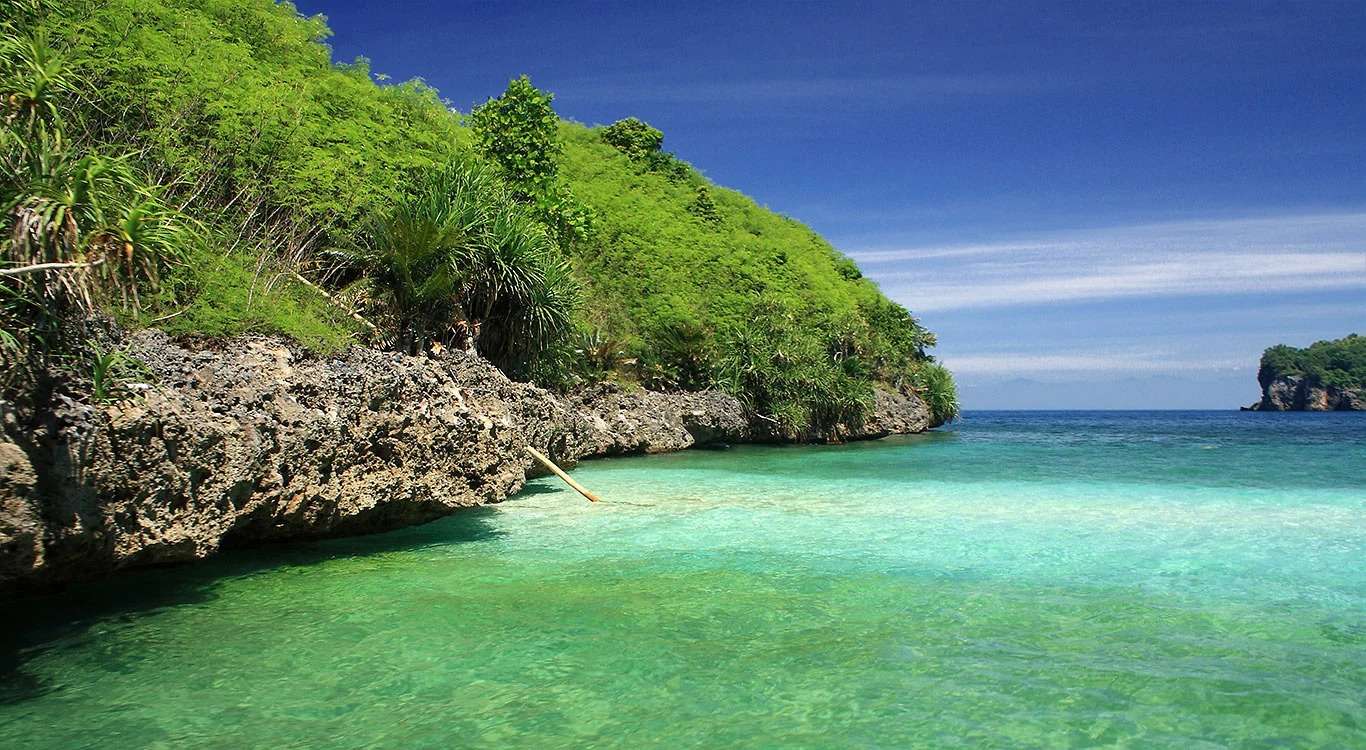About guimaras

Guimaras, officially the Province of Guimaras, is an island province in the Philippines located in the Western Visayas region. The capital is Jordan, while the largest local government unit for it is the municipality of Buenavista. The province is situated in Panay Gulf, between the islands of Panay and Negros. To the northwest is the province of Iloilo and to the southeast is Negros Occidental. The whole island is part of the Metro Iloilo–Guimaras, one of the twelve metropolitan areas of the Philippines.
The province consists primarily of Guimaras Island, and also includes Inampulugan, Guiwanon (or Guiuanon), Panobolon, Natunga, Nadulao, and many surrounding islets.
Guimaras, formerly known as Himal-os, was a sub-province of Iloilo until it was made an independent province on May 22, 1992.
The sectors having the most potential to support Guimaras' economic development are mangoes, tourism, cashew cultivation, and food processing. Another expanding sector is fishery, which includes growing seaweed. Infrastructure, capacity-building initiatives, more favorable legislation, and higher investments are just a few examples of local variables that have boosted the potential growth of these industries.
Guimaras is well known for its agricultural crops, particularly the mangoes, half of all exported mangoes come from this island. The island province is famous for producing one of the sweetest mangoes in the world, thus earning the nickname "Mango Capital of the Philippines" from local and foreign tourists. Guimaras mangoes are reportedly served at the White House and Buckingham Palace. Guimaras' largest event of the year is the Manggahan Festival (the Mango Festival). The variety of mangoes produced are also best for making dried mangoes, jam and other special delicacies. They also produce other fruits and vegetables such as bananas, tomatoes, and eggplants among others.
History
In 1521, after the defeat of Ferdinand Magellan, the Spanish survivors aboard three vessels went to Leyte to undergo some repairs. Later they abandoned one of the vessels named Concepcion in Bohol for being unseaworthy and sailed towards the nearby islands of Negros and Panay.
R. Morales, an author of the book “The Augustinians in Panay” published in 1987, believed that the Spaniards must have cruised close to the southern coasts of Negros and Panay. The utterly homesick Portuguese mariner could have given the name Guimaraez to that small island lying very near to Panay’s southeast shores, in order to immortalize in this part of the world the first capital of the country and the birthplace of Portuguese nationality: Guimaraez.
Guimaras was cited in numerous documents and books on natives who are “masters in building all kinds of ships.” It was also mentioned in the “Relation by Loarca of the Philippine Islands” by Blair and Robertson that the island was rich in products such as wood, stone for construction, wax and honey. In the latter years, the natives harvested rice, corn, tobacco, and some coffee and cacao. It was also recognized as important in fishing and agricultural industries in the book “The Philippine Islands Ecclesiastical Affairs, 1638-1640”.
The beauty of the island attracted attention. As related by Sonza and Gonzales:
“The Spaniards headed by Gonzalo Ronquillo de Peñalosa who established the first Spanish settlement in Arevalo were struck by the beautiful sceneries in the island. They noticed that its verdant mountains abounded with forest timbers, limestone for building purposes, and excellent hunting and fishing grounds.
During the 19th century, two outstanding foreigners visiting Iloilo made favorable comments about Guimaras. One was Sir John Bowring, the British Governor of Hong Kong, scholar, and author of the famous book, “A Visit To The Philippines.” Bowring came in 1859 and noted that Guimaras was a blessing to the newly opened port of Iloilo by making it safe to navigation.
The second foreign visitor was Dean C. Worcester who later became a member of the Philippine Commission during the American Regime. Worcester came in 1887, while a zoology professor at the University of Michigan, to collect specimens of Philippine fauna. He wrote, “Guimaras is extremely beautiful. During the month we remained in Salag Dako, we not only regained our health but also gathered much valuable materials.”
The Christianization of the people of Guimaras was started almost simultaneously with those of Iloilo. For this purpose, the Spaniards organized pueblocitos (villages) of Nayup, with San Pedro Apostol as patron saint; Nabilhan with San Juan Bautista as patron saint; and Igang whose patron saint was Santa Ana. For a long time these small villages formed a “visita” of Oton. Governor General Dasmariñas reported to the King of Spain on June 20, 1591 that Oton had two friars, one of whom was assigned to visit Guimaras from time to time. In the 18th century, it was annexed to the parish of Iloilo. During this period, the island was frequently raided by pirates and the growth of population was slow.
In 1742, the island fell under the jurisdiction of Dumangas up to 1751 when the Augustinian Order gave way to the Jesuits. In 1768, the Dominicans took over from the Jesuits the spiritual jurisdiction over Guimaras. Then in 1775, it was organized into the regular parish with Iloilo. Still later, the three villages mentioned earlier were formed into a single parish. Finally, when the population had increased considerably, the island was given its municipal status with seat of government in Tilad, now, Buenavista, and the old town site was in what is now called Old Poblacion.
When Guimaras became a municipality before the turn of the century, the first captain del pueblo was Eugenio Tarrazona. Those who succeeded him as chief executive of Buenavista, the mother town of the three municipalities in the Sub-province were Manuel Garganera, Pedro Zaldivar, Marcelino Gabiazon, Jacinto Gabinete, Mariano Martir and Sergio Consing.
The American Regime brought faster progress to the island. In 1908, the Guimarasnons were given the right to elect their municipal president and Manuel Garganera was the first elected president. One great American military genius, General Douglas MacArthur left an indelible mark in Guimaras. Fresh from West Point as a 2nd Lieutenant at the age of 23, he came to Iloilo as the head of the company of the Corps of Engineers. In Iloilo, he constructed roads and the wharf along Muelle Loney from Arroyo Street to the place of the Compania Maritima Building. He had his headquarters in Guimaras at Camp Jossman in Barrio Supang Buenavista. The monuments of his stay in the island are the Sto. Rosario wharf and the road from Sto. Rosario to Supang. In constructing these public works, MacArthur utilized the labor of native laborers in addition to that of army engineers. The wharf is still in use after more than seventy years. Last December 29, 1992, a resolution was passed by the Sangguniang Panlalawigan changing the name Sto. Rosario Wharf to Gen. MacArthur’s Wharf in memory of Gen.Douglas MacArthur.
The development of Guimaras and the steady growth of its population necessitated the splitting of the island town into municipalities in 1918. Barrio Nagaba became the Municipality of Jordan with Valeriano Villanueva as the first Municipal Mayor and Licerio Segovia as Vice Mayor. The third municipality, Nueva Valencia, was created in 1941 with Florentino Gallopa as the first town executive.
These three municipalities remained integral parts of the province of Iloilo until the creation of Guimaras into a Sub-province on June 18, 1966 per Republic Act 4667, thereby giving the island more governmental autonomy, under the initiative and leadership of Senator Rodolfo Ganzon and Congressman Fermin Caram, Jr.
Governor Antonio G. Ortiz was the first appointed and eventually elected governor of the Sub-province. His original designation was Lieutenant-Governor but was later changed to Governor by virtue of Republic Act No. 5682 which was approved on June 21, 1969.
On July 1, 1984, Governor Antonio G. Ortiz filed a leave of absence and designated Atty. Gualterio B. Gelvezon as Officer-in-Charge of Guimaras. The designation was officially concurred by Minister Jose A. Roño of the Ministry of Local Government. Unfortunately, Governor Ortiz succumbed to his lingering illness and died on July 17, 1984. Governor Conrado J. Norada, by virtue of Section 2140 of the Revised Administrative Code assumed the power and function as Governor of Guimaras, at the same time Governor of the Province of Iloilo. On October 1, 1984, Governor Leopoldo H. Locsin, by virtue of an appointment issued by President Marcos assumed the post as Governor of Guimaras until October 23, 1986 when Dr. Catalino G. Nava acting on the designation issued by Local Government Minister Aquilino Pimentel assumed the position of OIC Governor. On November 3, 1986, a new OIC Governor was designated in the person of Abelardo D. Javellana, the former Buenavista Mayor who served the people of Guimaras until February 1, 1988.
The second and eventually last elected Governor of the Sub-province was Dr. Catalino G. Nava. During his term, the Sub-province was converted into a full-fledged and regular province of Guimaras on May 22, 1992 . He served his fellow Guimarasnons until June 30, 1992.
The euphoria that the Guimarasnons have felt on the conversion of the island into a Province following the overwhelming “YES” vote in the plebiscite conducted for the purpose simultaneous with the national election on May 11, 1992 has barely subsided when the new set of Provincial Officials appointed by the President to help steer the development of the place have bucked down to work on July 17, 1992. This new autonomous political status of the island with the able leadership of its first appointed governor, Emily R. Lopez is believed to usher an era of better progress and prosperity to the place.
By virtue of Republic Act No. 7896 and 7897, which was approved by President Ramos on February 20, 1995, two (2) additional municipalities, Sibunag and San Lorenzo were created in the Province.
The Province of Guimaras is composed of five municipalities namely: Buenavista, Jordan, Nueva Valencia, San Lorenzo and Sibunag. It has a total population of 151,238 in 2007 census.
Listings in guimaras
More Provinces

eastern samar
Eastern Samar is a province in the Philippines located in the Eastern Visayas region. Its capital is the city of Borongan. It was in Eastern Samar where Ferdinand Magellan landed in Homonhon Island in the town of Guiuan on March 16, 1521, in what is now officially recognized as the ...read more

ifugao
Ifugao is a landlocked province of the Philippines in the Cordillera Administrative Region in Luzon. The Rice Terraces of the Philippine Cordilleras and Banaue Rice Terraces are the main tourist attractions in the province. These terraces are believed to have been hand-carved into the mountains 2,000 years ago to plant ...read more


